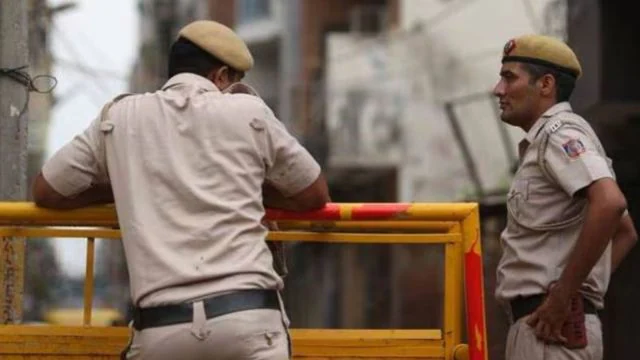“Two Lives, One Uniform”: Why Only 3 Women Lead 225 Police Stations in Delhi

Image via The Indian Express
New Delhi | August 31, 2025
On August 31, 2025, a report revealed a striking imbalance in the Delhi Police force. Out of 225 police stations, only three are led by women Station House Officers (SHOs). This fact has raised new debates about gender equality, women’s empowerment, and the real challenges women face in India’s largest metropolitan police system.
Delhi Police employs around one lakh personnel. Among them, only 10,000 are women. This means women make up just 10% of the workforce. The numbers are even smaller when we check leadership roles, where women often remain missing from the top chairs.
The Reality of Women SHOs in Delhi
Delhi has 219 law-and-order police stations. In these, only two women officers are posted as SHOs today. Inspector Vandana Rao heads the CR Park police station in South Delhi. Inspector Vipnesh is in charge at Netaji Subhash Place under the Metro jurisdiction. The rest, 217 stations, are commanded by men.
There are also six police stations under special units. Among them, just one woman holds the top post. Inspector Adith Lily Baxla leads the Special Police Unit for Women and Children (SPUWAC). This unit deals with cases of domestic violence, crimes against women, and child abuse.
So, in all of Delhi, only three women SHOs stand against 222 men.
“We Lead Two Lives”
The issue is not only about numbers. It is also about the burden that women officers carry. A senior female inspector explained, “We live two lives at the same time, while men have to lead just one. It’s not easy for a woman officer to manage both work and household responsibilities.”
This sentence highlights the double duty. A woman SHO must run a police station that never sleeps. At the same time, she is expected to look after her family and children. The dual role often discourages women from taking field postings like SHO.
What Makes an SHO’s Job So Demanding?
The SHO is the backbone of every police station. The role involves long hours, constant pressure, and high responsibility.
- The SHO must ensure law and order at all times.
- They work 24×7, with no fixed weekends or holidays.
- They are the final authority for criminal investigations.
- They manage a staff of 120 to 150 officers, including sub-inspectors and constables.
- They answer to senior officers and face public scrutiny every day.
In simple words, the SHO’s chair is both powerful and stressful. Many women hesitate to take this role because of the endless hours and lack of personal time.
Women in Higher Ranks: A Wider Gap
The gender gap is not just at the SHO level. It stretches to higher ranks too.
- Deputy Commissioners of Police (DCPs): 6 women, 46 men.
- Special Commissioners: 14 men, none are women.
- Only one woman officer, Nuzhat Hassan, once served as Special Commissioner. She was later moved to DG Home Guards.
This shows that women in Delhi Police are few in number not only at the ground level but also at the senior command level.
Past Attempts to Fix the Problem
The shortage of women SHOs is not new. In 2021, then Commissioner Rakesh Asthana promoted nine women inspectors to SHO posts in a single reshuffle. This was seen as a big breakthrough at the time. Yet, many of those women later stepped down due to personal or family reasons.
In fact, the highest number of women SHOs serving at the same time in Delhi was five, way back in 1986. That record still stands after almost four decades.
This shows that the system has not changed much in all these years, even after several efforts.
Why More Women SHOs Are Important
Experts say the presence of women in SHO positions can change how police stations function.
- Better handling of sensitive cases: In crimes like sexual assault or domestic violence, survivors often feel more comfortable speaking with women officers.
- Role models for society: Women SHOs inspire other young women to join the police and aim for leadership.
- Breaking stereotypes: A woman leading a police station challenges the idea that policing is only for men.
- Balanced approach: Women often bring a more people-friendly style of leadership in law enforcement.
Senior lawyer Geeta Luthra once said, “Women SHOs mark a great step forward. It is not just a posting; it is respect for women in power.”
DCP Priyanka Kashyap also noted that women officers bring trust and confidence when dealing with victims of gender-based crimes.
The Selection Process for SHOs
The appointment of an SHO is not simple. When a vacancy opens, a screening committee of Special Commissioners reviews eligible inspectors. The decision is based on service record, discipline, and suitability for field duties.
Usually, SHOs serve for a two-year term before being rotated. But because the number of women inspectors is so low, the pool of candidates who can be considered for SHO posts is also very small. This is another reason why the representation remains poor.
Cultural and Social Barriers
Behind the numbers lie deep cultural barriers. Many women officers face questions not about their skills, but about their ability to “manage family and work.” Society still sees policing as a “male job.” Families sometimes resist women officers working late hours or staying on call all night.
This attitude puts pressure on women to choose “softer” postings in administrative offices rather than active field roles. The result is fewer women stepping into SHO duties.
The Road Ahead
Gender diversity in the police is not only a matter of fairness. It directly affects law enforcement and community trust. Delhi has witnessed many high-profile cases of crimes against women. In such situations, the presence of more women SHOs could make survivors feel safer and improve public confidence in the system.